Of all the cities in Southeast Asia, Manila has, what I consider, the best street shooting opportunities. Since coming to the Philippines 7 years ago to shoot for my NGO clients, I have enjoyed exploring Manila and the other cities, each with unique, interesting and diverse photographic opportunities.
Of course, not all areas in any large metropolitan city like Manila, are acceptable for bringing photo groups, but over the past 3 years, with the help of local photojournalist, Red Santos, we have identified some truly fantastic areas where our tour group can safely learn, practice and enjoy street shooting. What’s so great about “street shooting” in the Philippines, is that the people are curious, open and friendly about visitors like us.
One of the favorite areas for our group to visit is the ‘neighborhood’ under the bridge. I almost have to drag everyone away from it to get back to the hotel for dinner. The lighting is exceptional almost all day with dramatic bounce light coming in from each end of the overpass. We can create terrific images even during what is considered the worst time of day for photography!
Many people have witnessed the impoverished, likely dangerous areas of any large city and wouldn’t dream about actually visiting them much less those who live there. Unlike city areas that consist primarily of the indigent, derelicts, drug addicts, criminals and worse. This Manila ‘neighborhood’ where people live in makeshift ‘cubicles’, sleep on discarded stacked cardboard boxes is a community of very hard working people and their families who choose to live there due to access to and opportunities for employment.
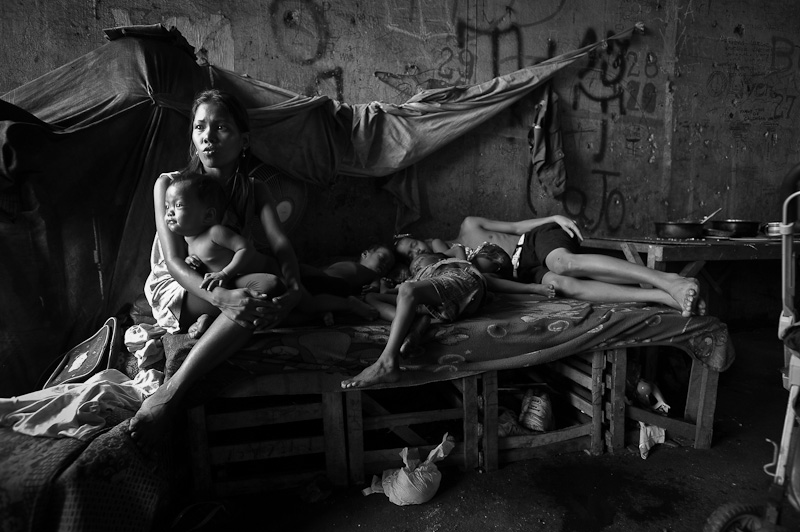
When we visit this community as well as all others we visit, we initially interact with people who show an interest in us. They are curious and typically ask where we are from and why we are in the area taking photos. They are interested and then anxious to tell us about their relatives and friends who have immigrated to the U.S.
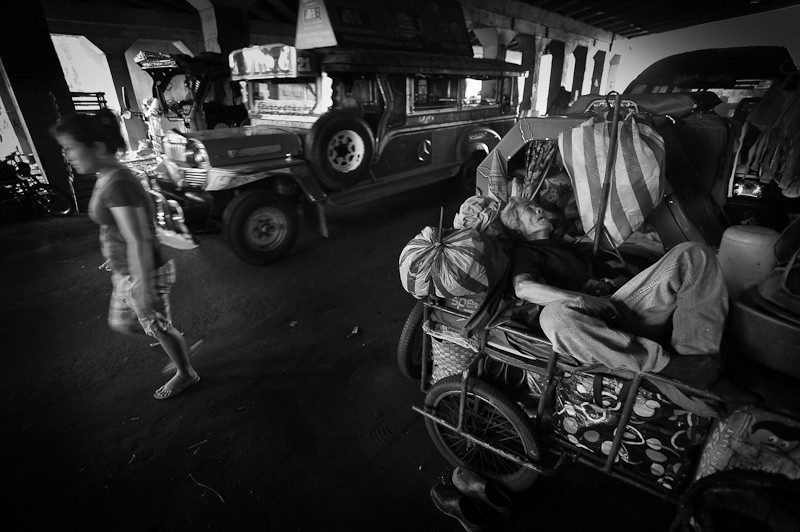
During the daytime, there are not too many men around; it’s mostly women and children, because the husbands are out working. While some women take care of their children, others are busy selling charcoal or snack foods. All regular daily activities take place here, eating, bathing, doing laundry, etc., all punctuated by the thunder of the trains that pass through the community every thirty minutes.
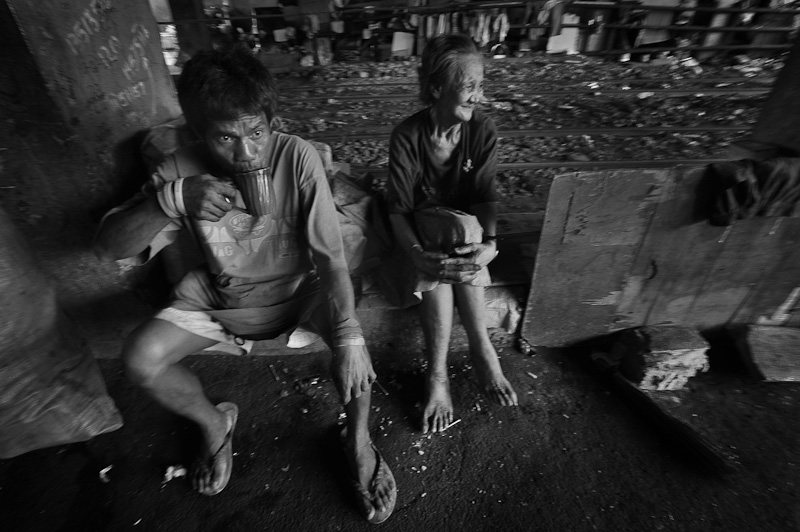
We talked with many people who live here; several who have lived in this particular area since the mid 1960′s! They consider this place their home and they are not ashamed of it, on the contrary, they feel a sense of community, and wouldn’t think of living anywhere else.
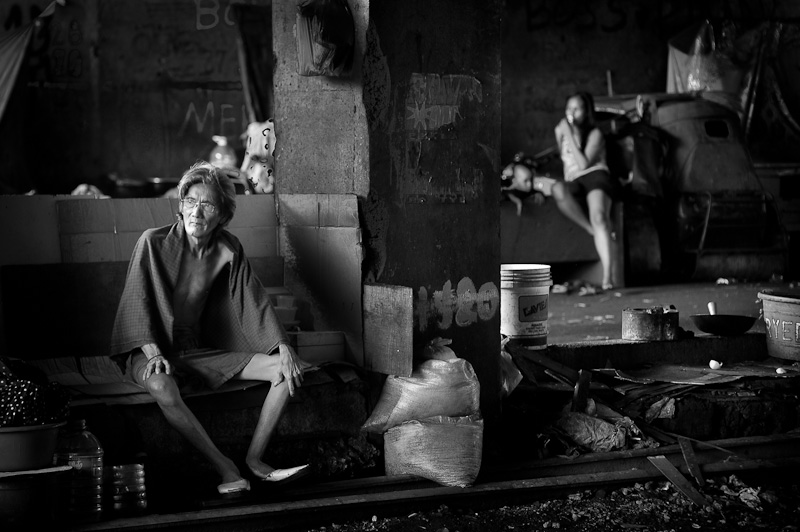
I have chosen to share these 18 images in black and white because I feel that the lack of color eliminates or at least minimizes distractions and most accurately portrays the “feeling” of the place. In these photos I see hope rather than despair, strength rather than weakness, and most of all I see the enduring power of the human spirit.
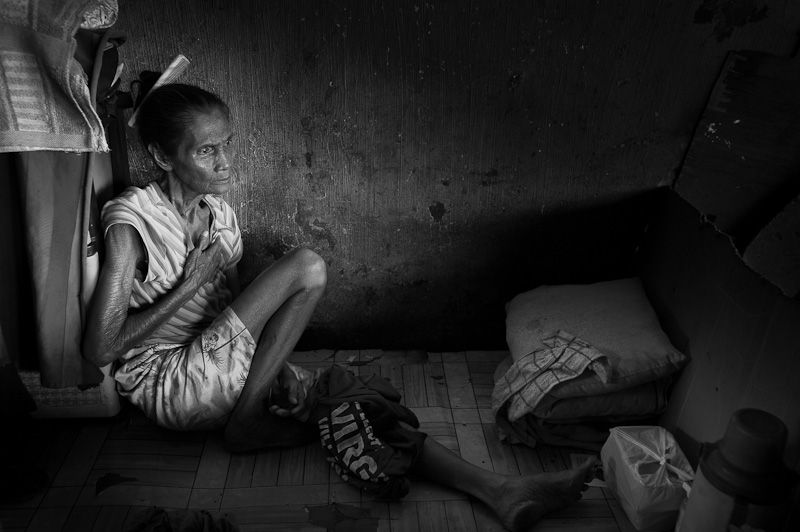
Each time we visit, we always assure the people of this unique community, that we will share these photos with our friends and family, so that others can have a look into a world that they very likely did not know existed or they may have preconceived notions about.
Our visit to the “people living under the bridge” is always an educational, eye-opening experience for us. It’s an activity that we will continue to offer our future tour guests, not only for the purpose of learning “street photography” but also for the opportunity to interact with other human beings, with whom we share the planet. I hope that these people remember our visits as fondly as we do.


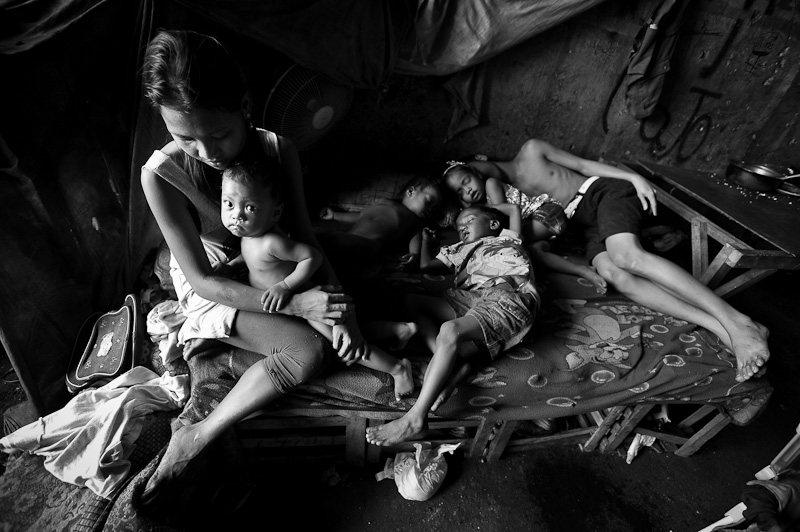
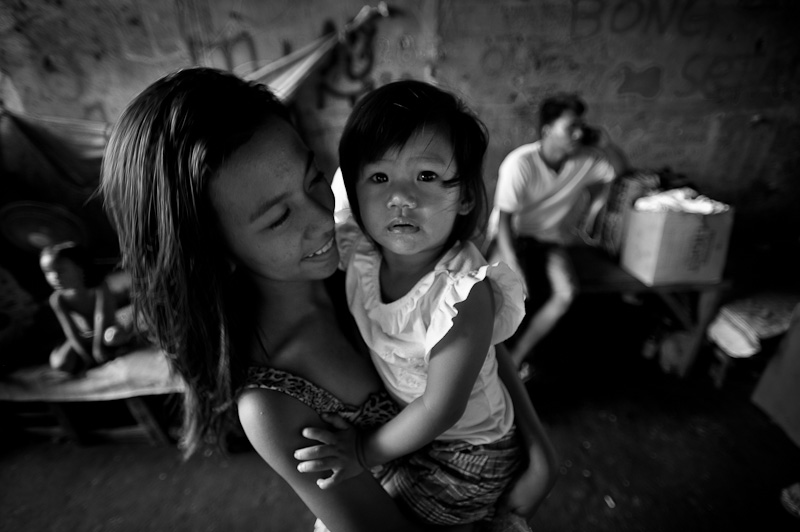
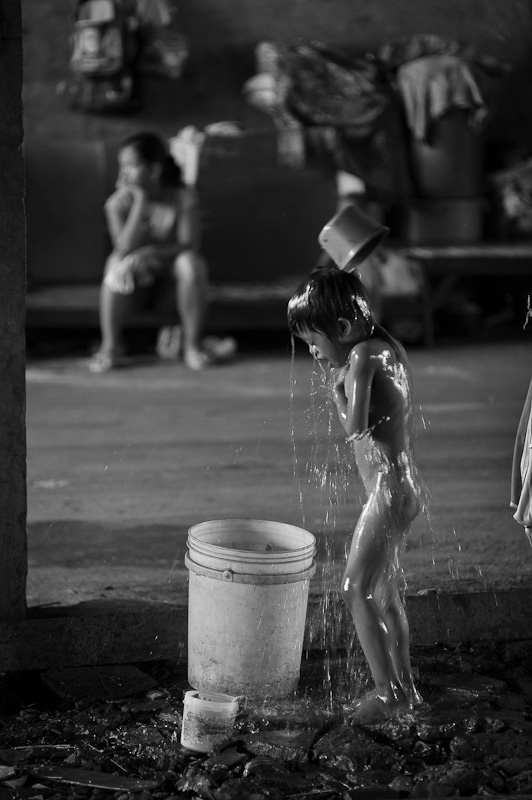

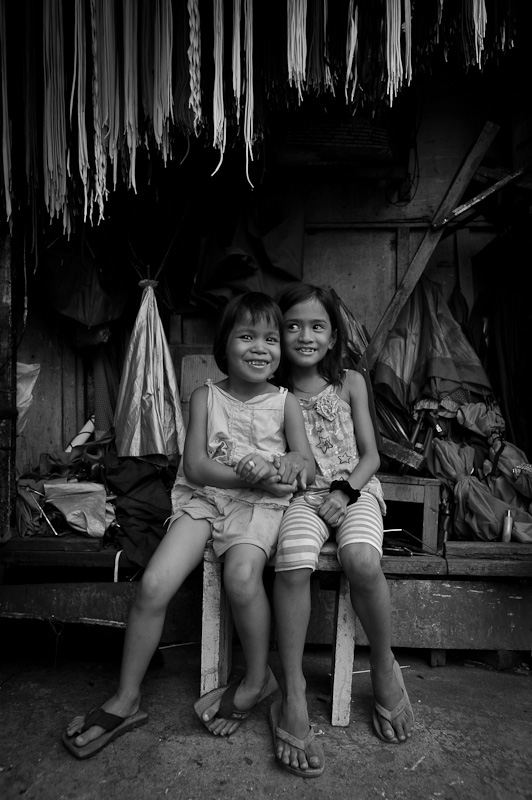


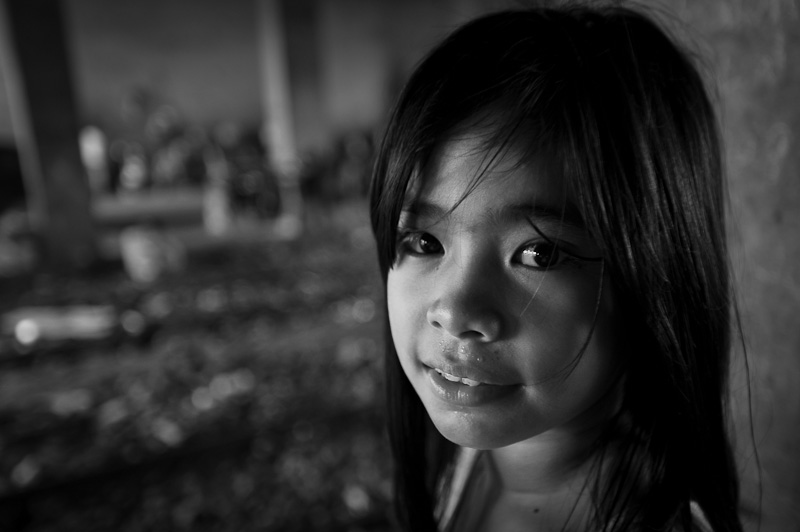


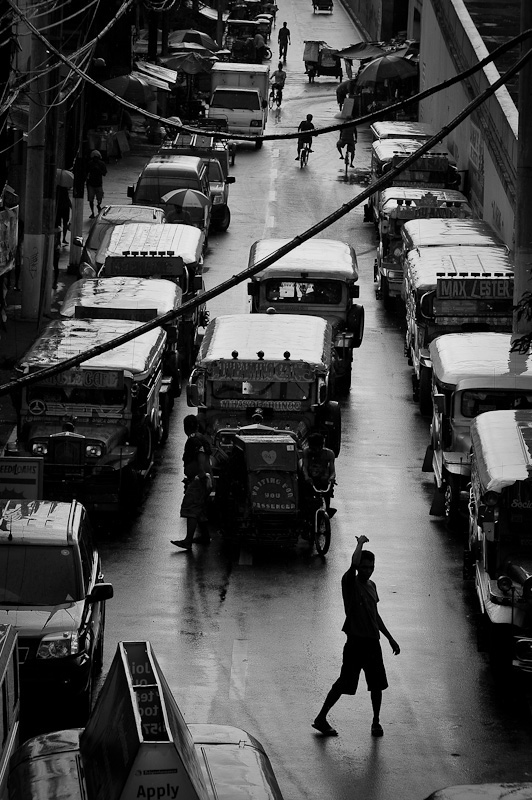
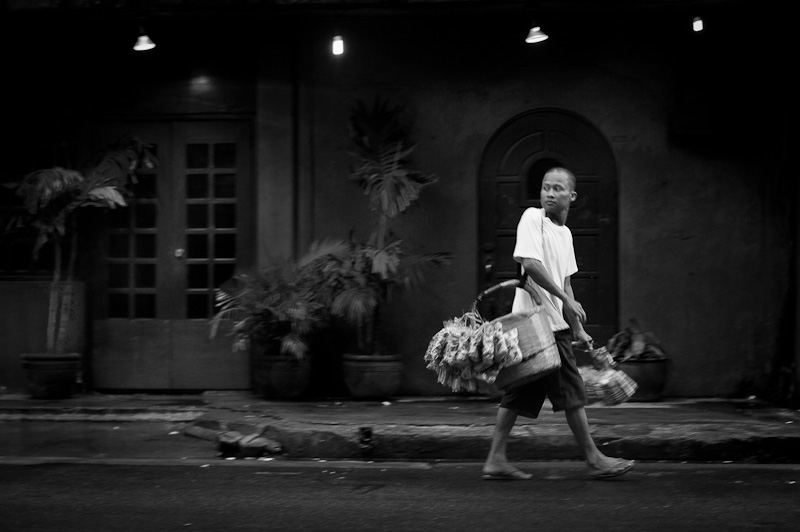
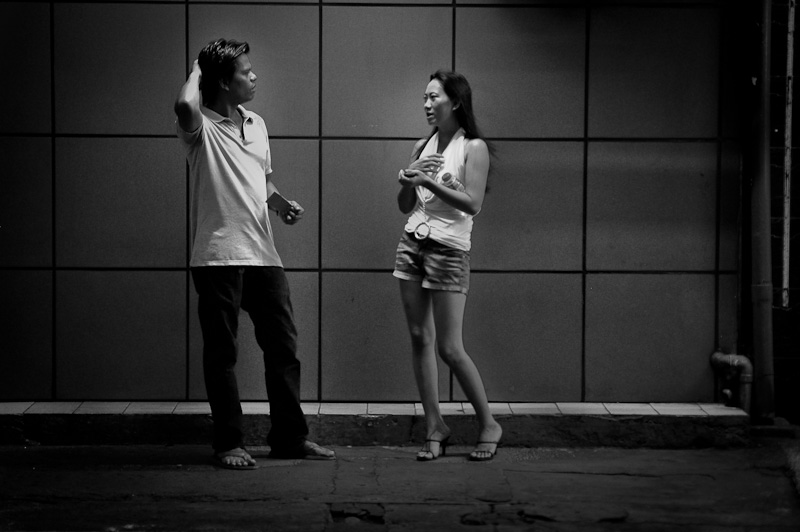






WOW! Some really striking imaginary here. This is some of your best! Really, really like these. It must be hard to keep your workshop participants from making these people feel like spectacles? Not that you/they would do it intentionally, just with some many cameras being pointed at once, it has to be difficult. Says a lot about these people under the bridge and you.
Hi Matt,
Thanks for the comments, you make some very good observations and points!
Yes, there is always the challenge of arriving as a group of photographers and focusing attention on a singular subject or just a small group of subjects. I always visit these locations several times before bringing a group and often talk to the “village elders” or “barangay officials” to let them know why we’re in the area, and whenever we approach a situation like this with a group, we proceed slowly, without pointing cameras immediately, thereby letting the folks know that we’re as interested in them and their lives, as they probably are in us. It’s also quite helpful to have a local photojournalist like Red Santos, to co-lead the shoot, as he can translate and help “open doors” for us.
Matt, you’ve shot in the Philippines as well as many other developing countries and I know that you can relate, when working on an assignment, it’s often quite challenging to make photographs because the attention is, on you. Sometimes it takes quite a bit of time spent interacting and getting everyone “used to you” and everyone’s “focus on the photographer” dissipates. Then, and only then do the photographic possibilities seem to emerge, especially when one is trying to create “photojournalistic images”, where the photographer is not the focus of attention, and the subject is not always looking into the lens.
I can’t help but recall, a one point in the trip, when we visited a local school an ended up spending 20 minutes “signing autographs”. it’s kinda’ like being a celebrity!
The take home message from a day of street shooting in Manila, is often discussed at dinner with the group. Everyone is always amazed and delighted that the local Filipinos allow us to enter their lives and welcome us into their homes with such genuine hospitality. I think we have as much or more to learn from these people, than they have to learn from us.
Ahh, the Philippines….what a wonderful place! …but I fear that in your case; “I’m preaching to the choir”
Cheers,
Karl
Just finished looking at you black and white pictures of the people under the bridge. As soon as I finish my Israel pictures I’ll look at the pictures I took and see how they look in Black and white. Thanks for the shot of inspiration. Ed
Beautiful quality of light, and so cinematic… I love the feeling it gives. Reality seen through the lens of respect.
Really beautiful Karl.
Well done Karl!
I love the pic of the child taking a bath with the small “bucket!”. You know that every Philipino family has a small bucket like that in their home. They love taking baths with it no matter the social status! Kinda cool, I like it too.
Terry
Forgot to ask you…what software are you using to convert to B&W? Looks like Nik silver effects..?
Hello Karl,
B&W is so fitting the scene. I love these very strong images. You should be proud of your work here and so should be the subjects as you portray them all with MUCH respect and humility.
Great set of images Karl. I really enjoyed looking at these.
Terry, thanks for the comment and the question. As you know, I’m not much into “post production”. I shot these images in JPEG (color) and then using Lightroom 3, I just clicked the button for “black and white”. Then, in most cases I also did a bit of vignetting and pushed the “Blacks” slider to the right a few notches. I should probably take the time to learn a program like Nik Silver Effects. Perhaps some day, when I am back in San Diego, I’ll take a class if it’s offered. Cheers, Karl
Erin, Lisa, Ian, Ruti Terry and Ed, Thanks for the nice comments and compliments. I am glad you enjoyed this set of photos. 🙂
these are so beautiful and powerful . fabulous work.
Hey Karl, thanks for sharing your photos. You’ll always be an inspiration. Salamat
Red, I couldn’t have done it without you buddy! Thanks a million for making my Philippines tours such a great experience for everyone! Salamat Po!
Yes, Filipinos are wonderful people. That’s why I married one! 😉
Yep, that’s what my comment, “preaching to the choir” meant….I’m sure not everyone understood, just those that know Alou.
Oh Wow! Compelling images in black and white……..
Karl,
In reply to your editing B&W images: Your B&W work is amazing as is. Really! You prove that getting it RIGHT in camera is where it’s at!
If, however, you are ever curious about NIK silver effects, just let me know. I use it all the time for weddings and portraits and it’s the best B&W software out there.
Talk to ya soon,
Terry
Karl,
Your photos make me pause. They are a reminder that being able to spend time with people like you have dissolves the differences and makes for one-to-one interactions. I know from our trip to SE Asia that all of this is tantalizingly “there” but needs time and attention to shed what we come with so we can sensitize outselves to what is the frequently simple and unique in front of us. The black and white heightened the experience and differentiated it even further.
Thanks,
Jay
Thanks Terry, I think I’ll take you up on the offer when I’m back in San Diego! I’ve heard and seen great things about Nik software & I would love to have you show me how it works (and some quick fix shortcuts). Take care, Karl
Dear Jay, thanks for your comment, you’re totally right. I wish everyone had the chance to travel and interact with others the way we can…it would certainly help to break down stereotypes and prejudices and preconceptions.
These are wonderful. Not sure why I didn’t see them before. Love the shot of the guy in front of the jeepneys taken from above. But as a collective whole, they are terrific.